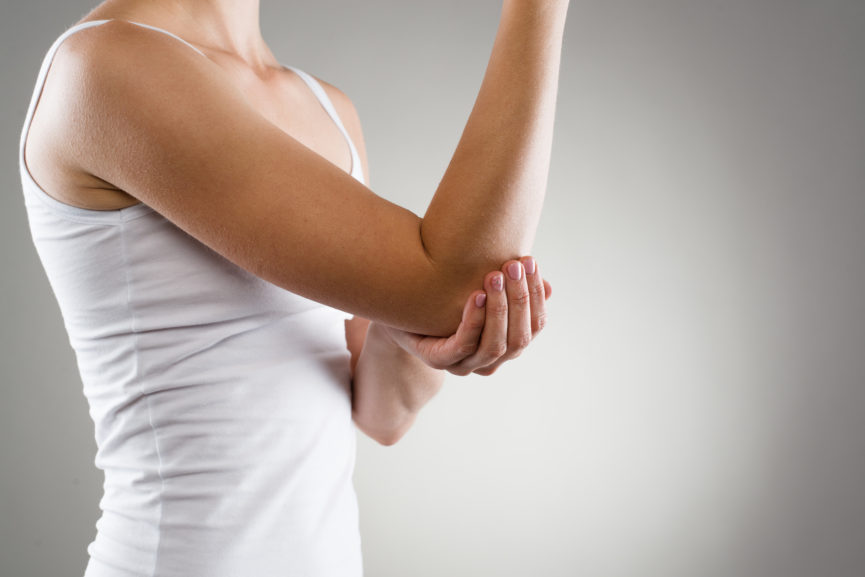Medial epicondylitis, much better known as golfer’s elbow, is a painful condition that affects thousands of people every year. Did you know that, despite its name, it can be caused by a number of activities, not just golf?
It isn’t life-threatening, but it causes significant pain and can limit your ability to do things you enjoy. Learning how to treat golfer’s elbow the right way can help you get to back doing what you love.
There is no quick cure. However, there are things you can do in the short- and long-term for lasting relief. Read ahead to learn more about your options.
Is Golfer’s Elbow Serious?
It’s a relatively benign condition in the sense that it does not lead to organ damage or anything more serious like that. Most people with golfer’s elbow will see improvement over time.
However, it can lead to significant pain and reduced quality of life. It is not something that should be ignored. You shouldn’t try to ‘tough it out‘.
Living with pain and not being able to enjoy the activities you love can be extremely frustrating. This is an injury that takes time to heal properly.
Causes of Golfer’s Elbow
Golfer’s elbow is caused by overly repetitive and/or strenuous movements of the arm and hands. This leads to wear and tear of the tendons and muscles of the elbow.
You can get golfer’s elbow without ever stepping foot in a country club. Other sports that can lead to this condition include weightlifting and throwing sports, such as javelin and shot put.
Manual work can also to injury of the medial epicondyle. This includes hammering, painting, chopping wood, and other tasks. Cooks and people who type on a keyboard are also at risk.
Signs and Symptoms
You or someone you know might have be ignoring their symptoms of medial epicondylitis this very moment.
The most common and noticeable symptom is pain. It localized to the inside of the elbow. However, the pain can shoot up or down the arm and to the hand.
The pain gets worse when the area is touched and with movement. You’ll notice difficulty or pain when moving the arm and your grip could be negatively affected.
Confirming the Diagnosis
Golfer’s elbow is a medical diagnosis that a physician makes. Generally, coming to this diagnosis is relatively straightforward.
Your doctor can usually tell just from hearing about your symptoms and the activities and/or jobs you perform. They might ask you to move your arm in a certain way to see if the pain gets worse to help rule in the diagnosis.
Usually, extensive lab work and imaging studies aren’t necessary. However, X-rays, magnetic resonance imaging (MRI), and computerized tomography (CT) scans, and nerve conduction studies (NCS) might be considered if the diagnosis
How to Get Rid of Golfer’s Elbow
The first thing you need to do is understand that, in most cases, this isn’t a problem that will go away overnight.
The worst-case scenario is that you re-injure your elbow. This can be a lingering problem that just doesn’t seem to go away.
It’s best that you see a doctor for medical advice and treatment options. However, this is a condition that requires a lot of cooperation and patience on your part.
Rest and Relaxation
The most crucial part of treatment is to rest the affected arm. You have to stop doing whatever activity that caused it in the first place.
Unfortunately, you might have to take a break from other things, too. Anything that requires twisting, flexing, gripping, or leads to any semblance of pain in the elbow should be stopped.
If you fail to rest properly, the problem will only get worse despite taking meds and doing rehab. It is very frustrating but this is something that can take months, not weeks to fully heal.
Rehabilitation Techniques
Rehab for golfer’s elbow include stretching and range of motion exercises. It’s very easy to hurt yourself if you aren’t careful.
It’s best to learn what techniques are best for you from a professional.
Pharmaceutical Treatment
Treatment using some kind of painkiller and/or anti-inflammatory drugs can help. Usually, over the counter meds like acetaminophen and ibuprofen can help the symptoms.
Steroid injections are sometimes done to reduce pain and swelling.
However, it’s always important to remember that these meds don’t speed up the healing process in any way.
Surgery
Some people may elect to go under the knife. This is generally reserved for people who have tried non-surgical techniques and saw little to no benefit.
In most cases, you will be operated by an orthopedic surgeon.
The goal of surgery is to repair damaged muscle and joints. This is done using grafts. Also, they can remove scar tissue
Regenerative Therapy
Platelet-rich plasma therapy (PRP) is becoming an increasingly popular option to treat tendon, ligament, and muscle injuries. PRP is a type of regenerative medicine treatment that stimulates your body to begin healing itself.
This is the latest and most promising type of therapy. It goes beyond invasive surgeries and medication to numb the pain.
Regenerative therapy for golfer’s elbow involves the use of platelet-rich plasma. It is applied in and around the joint. It works by stimulating the damaged tendons and muscles to regenerate back to normal.
It’s much less invasive and painful than surgery and lacks the potential side effects of taking pharmaceuticals over an extended period of time.
Start Healing Your Golfer’s Elbow Today
You’ve Learned How to Treat Golfer’s Elbow
Now you know how to treat golfer’s elbow through a variety of methods.
There are many people living with pain and frustration, and you’re not alone. There is nothing worse than being sidelined from work and not being able to do your favorites hobbies. But if you’re patient and stick to the treatment plan, most people do recover fully.
Are you interested in learning more about regenerative medicine? Check out this page to learn more.

